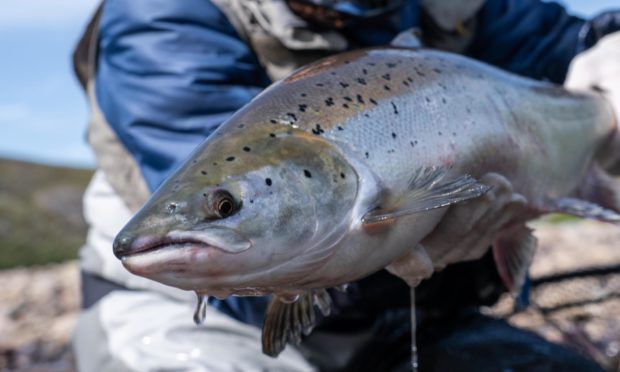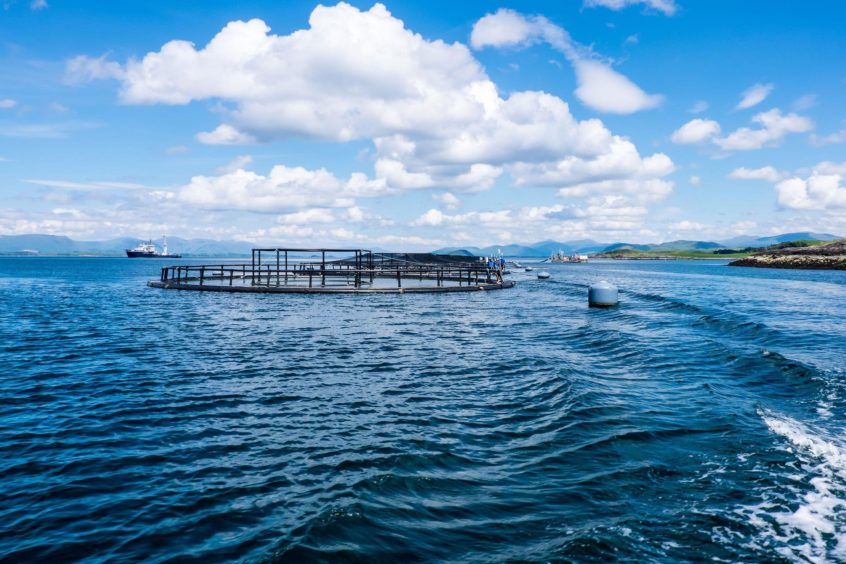Founder and MD of Gael Force Group Ltd, Stewart Graham, recently argued that a modern Highland Clearances is inevitable unless local people and businesses are supported and developed.
In his opinion piece for The P&J, Mr Graham referenced a proposed organic sea farm in Skye which was refused planning permission, directly affecting his own business. He called it “a dereliction of responsibility”.
“It was to create nine new jobs directly,” he wrote.
“However, just the cancelling of the equipment orders required by this development and to be built here in the Highlands by my company, Gael Force Group, has caused the immediate redundancy of more than 20 people, just in one company alone. This is a shocking narrowness in consideration and a failure of process.”
You can read Mr Graham’s comment piece in full here.
Below is a response to that article, written by Corin Smith, founder of Inside Scottish Salmon Feedlots (ISSF) – an organisation which is critical of the open cage salmon feedlot industry in Scotland.
While I do agree with some of Mr Graham’s sentiment and also passionately believe that rural areas of Scotland do have the assets that should be able to support vibrant communities and economies, I’m afraid to say that open cage salmon farming, far from being the solution, is the modern manifestation of the very forces that “cleared” rural Scotland over the course of the last 400 years.
It is a case so eloquently set out in Tom Devine’s masterpiece, A History of the Dispossessed. Concentration of ownership and disenfranchisement of communities was one of the leading causes and it is therefore worth noting that, of the 300 or so salmon farming sites active on the west coast of Scotland, over 95% are owned by just six corporations. These, in turn, are largely controlled by a handful of long distant billionaire families from Norway, Canada and the Faeroes. Our new “lairds of the sea” are equally disconnected from the communities they essentially own.
Expansion of open cage salmon farming will repeat the mistakes of the past
Another significant force of clearance were the environmental monocultures resulting from agrarian “improvement” which left no physical or cultural room for anyone else. The cattle ranches of the lowlands in the 1600s, the arable farms of Central and East Scotland, and the sheep herds everywhere else squeezed out the Cottars and those who had historic blood rights to the land.
Open cage salmon farms do the same, by emitting all of the slurry they create – the sea lice and disease, as well as mountains of plastic – over tens if not hundreds of miles. They also squeeze the life out of ecosystems and so affect the livings of the creel fisherman, the salmon fisherman and the eco-tourism operator, to name a few.
Salmon farming should have a place in Scotland. But, like all development, it should be appropriate in scale, must be with the consent of the local community
What is a north-west coast without all of these people? Is an industrialised west coast, completely dominated by open cage salmon farming, really what we want? Recent polling across Scotland commissioned by my organisation suggests that nearly 75% of the Scottish public oppose open cage salmon farming in its current form.
Left unchecked, the expansion of open cage salmon farming will simply repeat the mistakes of the past. The industry in its current form makes the worst excesses of 18th century landlordism look like a social enterprise.
Yes, it has created jobs and generated significant export sales. But at what cost? Cutting down the Amazonian rainforest would generate jobs and export sales too. But we should be, and are, better than that.
Industry must benefit local people and area
The north-west coast has seen a recurring cycle of boom and bust over the centuries. Whether it be kelp, herring, whitefish, sheep or wild salmon, they all have two things in common. First, the industries all came to an end eventually. Secondly, the vast majority of money made left the region.
Salmon farmers from Scotland have sold something in the region of £40 billion of fish over the decades. So where is the money? Where are the signs of the salmon farming boom? If salmon farming left the area tomorrow, there would be no obvious legacy, other than the 300,000 tonnes of salmon farm slurry that has been dumped on our sea floor. The industry, like all before it, has paid for subsistence existence and little or nothing more.
Salmon farming should have a place in Scotland. But, like all development, it should be appropriate in scale, must be with the consent of the local community, genuinely sustainable, aligned with the interests of existing businesses and, crucially, operate within an economic framework that sees local communities enjoy the capital surpluses that are generated as much as the long distant shareholders.
What does a better future look like?
With their wind, water and space, Scotland’s rural areas aren’t short of generating significant cash already. We just need to keep some more of the value where it is being created and use it to invest in making these even better and easier places to live and work.
The current economic settlement for rural areas seems industrial, of an era that has passed, out of touch and heavily skewed in favour of big business and a one dimensional preoccupation with increasing export sales and managing the balance of payments. This, combined with the devastating environmental impacts of open cage salmon farming, means a bad deal for Scotland and takes us down a one way cul-de-sac.
It would be naive in the extreme to place all our eggs in one basket and one so grossly unsustainable as this industry.
What does a better future look like? In my eyes, it is one where salmon farming exists, but with the express consent of communities because it has solved the worst problems of its pollution and biodiversity destruction. But also where communities are powered by vibrant and diverse local economies in which we have more of a say and share in more of the benefits.


